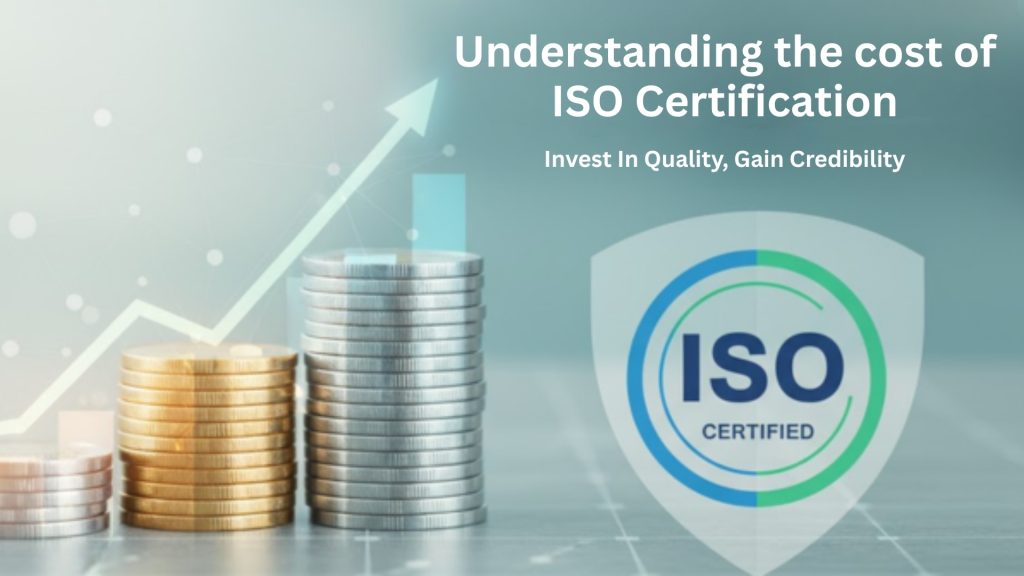In today’s competitive business environment, organizations strive to demonstrate their commitment to quality, safety, and continuous improvement. One of the most recognized ways to do this is by aligning with globally accepted standards. ISO certification is a widely respected indicator of operational excellence, recognized across industries and countries.
If you are wondering how to apply for ISO certification in India, this comprehensive guide will walk you through the essential steps. This blog is crafted for clarity, relevance, and compliance, and is particularly useful for organizations at any stage of their journey.
What is ISO Certification?
ISO (International Organization for Standardization) develops international standards to ensure the quality, safety, efficiency, and reliability of products and services. ISO certification is an acknowledgment that an organization’s management systems conform to specific ISO standards.
Some commonly applied ISO standards include:
- ISO 9001:2015 – Quality Management Systems
- ISO 14001:2015 – Environmental Management Systems
- ISO 45001:2018 – Occupational Health and Safety Management
- ISO 27001:2013 – Information Security Management
- ISO 22000:2018 – Food Safety Management Systems
Understanding these standards is essential before beginning the certification journey.
Why Apply for ISO Certification?
ISO certification provides a framework for building trust with customers, partners, and regulatory bodies. Let’s look at some of the top benefits:
Enhanced Organizational Credibility
Certification demonstrates that your systems meet global standards. It is often a prerequisite in tender processes and supplier evaluations.
Improved Quality and Efficiency
For example, ISO 9001:2015 helps organizations improve processes, minimize waste, and increase productivity.
Competitive Advantage
An ISO-certified organization often gains a competitive edge in both domestic and international markets.
Better Risk Management
ISO standards require structured approaches to identifying and mitigating risks.
Continuous Improvement
All ISO standards encourage organizations to monitor performance and continually improve their systems.
Step-by-Step Process: How to Apply for ISO Certification in India
The process of applying for ISO certification is universal, regardless of location. The steps listed here are standard for organizations seeking certification for any ISO standard.
Step 1: Identify the Relevant ISO Standard
Begin by understanding your organization’s needs. Whether it’s quality, environmental responsibility, food safety, or information security, select the appropriate ISO standard.
If you are focused on quality, ISO 9001:2015 is the most commonly adopted standard worldwide.
Step 2: Understand the Requirements of the Standard
Obtain a copy of the ISO standard from the official ISO website or authorized publishers. Study the requirements thoroughly. Each standard outlines the structure and expectations of the management system it governs.
For example, ISO 9001:2015 is based on seven quality management principles such as customer focus, leadership, and process approach.
Step 3: Gap Assessment and Planning
Conduct an internal assessment to compare your existing processes with the standard’s requirements. This helps in identifying areas that require change or improvement.
Develop a plan that includes resource allocation, roles, documentation updates, and employee awareness initiatives.
Step 4: Develop and Implement the Management System
This step includes:
- Creating documentation such as policies, procedures, manuals, and records.
- Communicating the requirements across departments
- Training employees on the newly developed management system.
The goal is to integrate the requirements of the chosen ISO standard into your daily business operations.
Step 5: Internal Audit
An internal audit is essential to evaluate the effectiveness of the implemented management system. It helps in:
- Verifying compliance
- Identifying process gaps
- Ensuring readiness for the formal assessment
This audit should be conducted by trained individuals who are independent of the process being audited.
Step 6: Management Review
After the internal audit, top management should review the system’s performance. The management review involves:
- Analyzing audit findings
- Reviewing performance metrics
- Assessing customer feedback
- Deciding on improvement actions
Management involvement is crucial for the ongoing success of the ISO system.
Step 7: Apply to a Certification Body
Select a credible, accredited certification body authorized to issue ISO certificates. Submit an application with details about your organization, the desired standard, and your management system.
Ensure that the certification body is accredited by a recognized body such as NABCB (National Accreditation Board for Certification Bodies) in India.
Step 8: Stage 1 Audit (Documentation Review)
The auditors will:
- Review your documentation
- Verify preparedness for the next stage
- Identify areas needing improvement
At this stage, any gaps found can be addressed before proceeding to Stage 2.
Step 9: Stage 2 Audit (On-Site Assessment)
This is the main certification audit. Auditors evaluate the actual implementation of the management system:
- Interviews with staff
- Observing processes
- Reviewing records
- Checking alignment with documented procedures
If your system complies with the standard, the auditors will recommend certification.
Step 10: Certification Decision
Following the audit, the certification body will review the findings and determine whether to grant certification. If successful, your organization will be issued an ISO certificate, typically valid for three years with annual surveillance audits.
Step 11: Surveillance and Recertification
To maintain certification:
- Annual surveillance audits are conducted to verify ongoing compliance.
- A full reassessment is required after three years for recertification.
Ongoing improvement and system monitoring are key to sustaining ISO certification.





